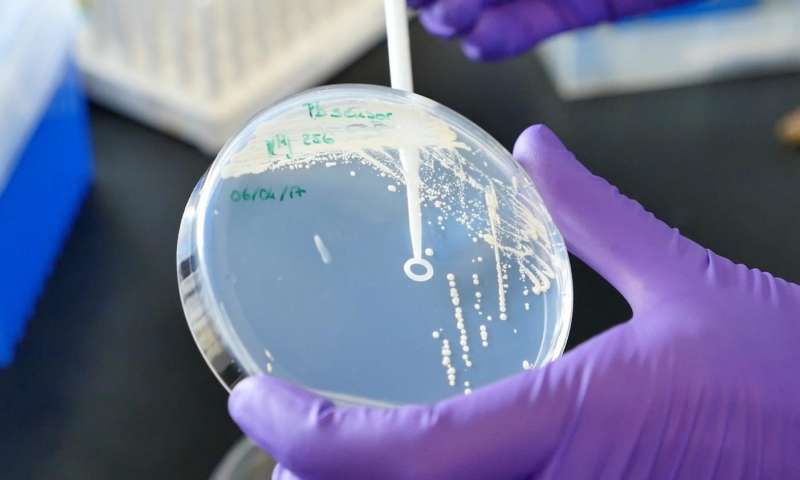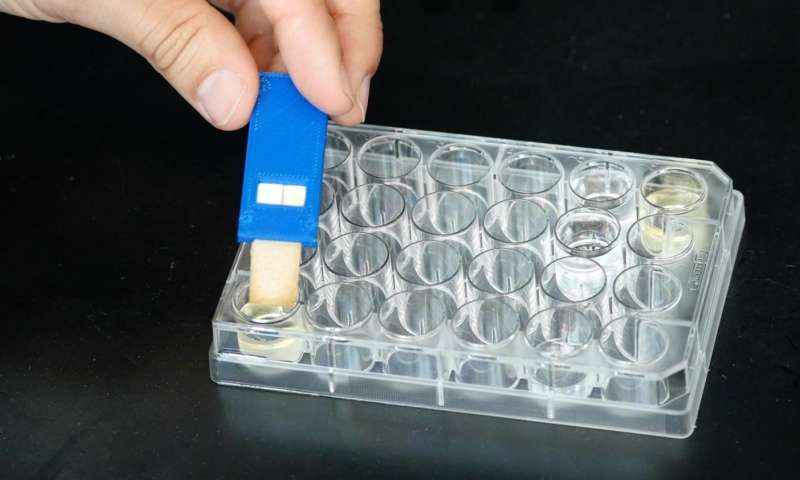Yeast-based Tool for Worldwide Pathogen Detection
Published on by Water Network Research, Official research team of The Water Network in Academic
Columbia University researchers have developed a tool that is likely to revolutionize the way we detect and treat pathogens in everything from human health to agriculture to water.

Researchers have developed a single-component, customizable, inexpensive biosensor using live cells to detect pathogens worldwide. Credit: Columbia University Office of Communications and Public Affairs
Using only common household baker's yeast, they've created an extremely low-cost, low-maintenance, on-site dipstick test they hope will aid in the surveillance and early detection of fungal pathogens responsible for major human disease, agricultural damage and food spoilage worldwide.
"Our biosensor allows us to detect a pathogen for less than one cent per test; it is easy to use, cheap to produce and doesn't require cold-storage facilities," said Principle Investigator and Columbia University Chemist Virginia Cornish. "It stands to impact agriculture and health, especially in developing countries, where it is arguably needed the most. We're excited about the possibilities."
The project began as a search to find a cost-effective, simple way to detect cholera, but quickly evolved to address other needs.
"We realized that the same household baker's yeast people use every day to brew beer and make bread could be programmed to detect a myriad of targets," Cornish said. "We can now alter the DNA of the baker's yeast to give it new functions that make it useful for a variety of applications. The prospect of using this technology in rural communities with little access to high-tech diagnostics is particularly compelling."
Around the globe, fungal pathogens present an increasingly urgent public health burden, causing an estimated two million deaths annually and inflicting devastating losses on plant crops and population decline in animal wildlife. Still, fungal pathogens and the diseases they cause are often neglected and research to combat them is underfunded.
"Fungal pathogens are known as 'hidden killers,'" Cornish said, adding that the devastation is most pronounced in resource-poor areas where efforts to reduce infections have been hampered by the scarcity of cost-effective fungal diagnostics.

Researchers have developed a single-component, customizable, inexpensive biosensor using live cells to detect pathogens worldwide. Credit: Columbia University Office of Communications and Public Affairs
While monitoring of global pathogen burden has been mostly limited to a small number of specialized centers, she explained, more effective surveillance could be established by making cheap diagnostics accessible at the point-of-care. Traditional diagnostics often rely on costly reagents, cold-chain distribution, specialized equipment and technical personnel, all of which are largely unattainable on-site.
To address this problem, and in close collaboration with experts in public health, Cornish and a team of her students swapped out naturally-occurring cell surface receptors of Saccharomyces cerevisiae, or baker's yeast, with pathogen-specific receptor proteins.
They started by building a biosensor for the detection of Candida albicans, a human fungal pathogen (a type of yeast) that occurs naturally in the human gut, but can cause serious medical problems and even death if the population gets out of control.
After replacing bakers yeast's natural receptor with that of C. albicans, the researchers then altered its DNA to enable production of lycopene, the pigment responsible for the red coloring of tomatoes. This allowed the engineered yeast to turn red when in the presence of a target molecule, in this case, C. albicans fungus pheromones.
The experiment was a breakthrough success. The sensor turned red when exposed to the fungal target. The team had developed a functional, simple, highly-specific, one-component sensor using only yeast
Read more: Phys.org
Media
Taxonomy
- Pathogen Removal
- Drinking Water Security
- Waterborne Pathogens
- Drinking Water Treatment
- Filtration
- Technology
- Filtration Solutions
- Research
- Filtration
- Drinking Water